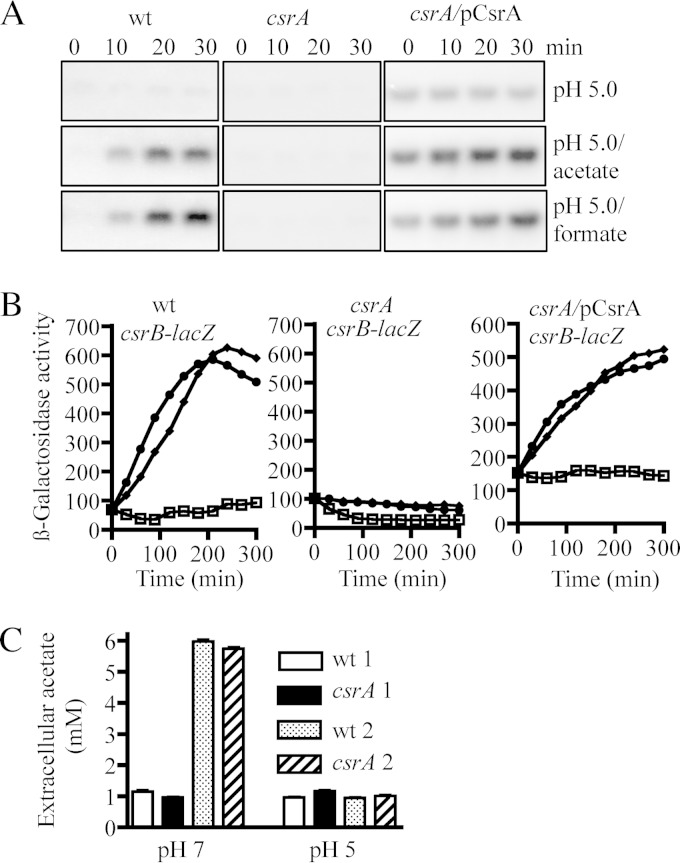FIG 2.
The synthesis of the BarA stimulus does not appear to be affected in the csrA mutant strain. (A) The isogenic strains KSB837 (wild type), IFC5010 (csrA), and IFC5010 carrying the csrA-expressing plasmid pMX544 (indicated as pCsrA) were grown in LB medium, the pH of which had been adjusted and buffered to 5.0 using 0.1 M homopiperazine-N,N′-bis-2-(ethanesulfonic acid) (HOMOPIPES). At an OD600 of 0.2, a sample was withdrawn, 7 mM acetate or formate was added to the medium, and samples were withdrawn every 10 min. Total RNA isolated from these samples was analyzed by Northern blotting using a CsrB-specific probe. The experiment was repeated three times in its entirety with essentially identical results. (B) Cultures of the isogenic strains KSB837 (wild type), IFC5010 (csrA), and IFC5010 harboring plasmid pMX544 (indicated as pCsrA), all carrying the csrB-lacZ transcriptional fusion, were diluted to an OD600 of ∼0.05 in LB medium at pH 5.0 as described for Fig. 1B alone (squares) or in the presence of acetate (circles) or formate (diamonds), and the β-galactosidase activity was followed. The average from four independent experiments is presented (standard deviations were less than 5% from the mean). (C) Concentration of extracellular acetate. The KSB837 wild-type strain and IFC5010, its isogenic csrA mutant strain, were grown in LB at pH 7.0 or 5.0. Samples were withdrawn either at early exponential growth phase (designated 1) or at late exponential phase (designated 2), and the concentration of acetate was determined with the R-Biopharm acetic acid determination kit (Boehringer Mannheim). The averages from three independent experiments are presented and the standard deviations are indicated.

